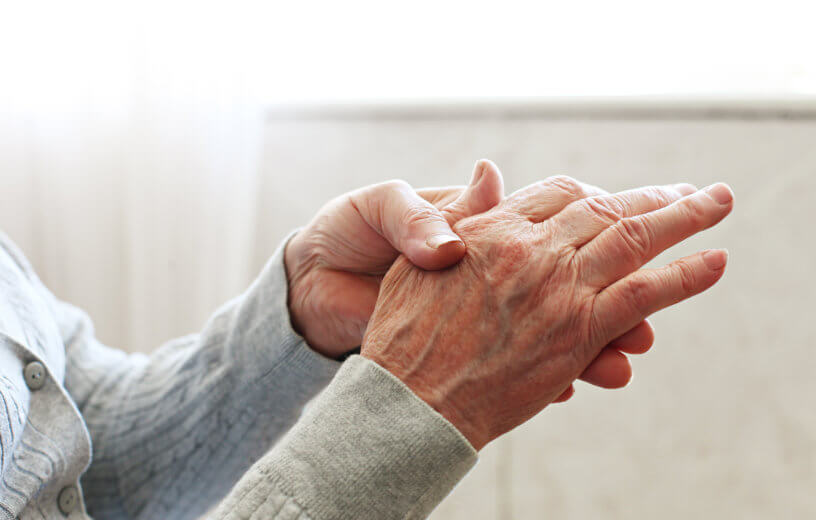Like many celebrities and entrepreneurs, 45-year-old US tech billionaire Bryan Johnson is trying to reverse the aging process.
Spending an average of $2 million a year on an anti-aging regimen, Johnson claims he now ages slower than some children. He explains: “the pace my body accumulates aging damage is less than the average 10-year-old”.
Many of Johnson’s age-reversal methods are questionable, involve dodgy science, and have known side effects.
While you can’t stop the aging process, and the gradual decline our bodies experience as we advance in years, there are some things we can all do – for free – to maintain our health as we age.
What does Johnson do? And is it scientific?
Fasting
Johnson reports fasting for 23 hours a day. He then eats one meal a day: 2,250 calories of nutrient-dense food “customized” to his body’s needs.
Eating for time-restricted periods in the day can have a positive effect on how we metabolize nutrients, inflammation levels, hormonal regulation, and cardiometabolic health (blood sugar, triglycerides, cholesterol, blood pressure, BMI and waist circumference).
However, a Spartan-like food intake can impair how our body responds to sugar (known as glucose tolerance). And it’s not necessarily any more effective for weight maintenance than reducing calorie intake at each meal.
Large-scale, long-term human trials are needed to confirm the limited risk-benefit findings of fasting.
Acid peels
Johnson has weekly acid peels (which use a mild acid to exfoliate the skin) to maintain a “youthful glow”.
But you cannot smooth sagging facial skin or remove deep scars or wrinkles. Acid peels also come with risks, including organ damage, infection, scarring and swelling.
Plasma infusions
Perhaps the most bizarre youth-inducing procedure Johnson has attempted is receiving blood transfusions from his 17-year-old son.
US biotech companies have explored plasma infusions to tackle age-related diseases in humans for decades. But there are no proven clinical benefits.
Side effects from blood transfusions include blood-borne infections, fever and allergic reactions.
Historical attempts to stay youthful
Humans have been experimenting with anti-aging methods for centuries. These have included all sorts of behavioral and lifestyle practices that are quirky, questionable, and even sadistic.
Ancient practices included crocodile dung face masks, which the Greeks and Romans used to brighten their complexions.
Romans also used donkey milk and swan fat to minimize wrinkles, due to their acclaimed rejuvenating properties.
Cleopatra apparently took daily baths in sour donkey milk. To sustain this lavish habit, she had a herd of 700 donkeys. Sour milk contains lactic acid, a naturally occurring alpha-hydroxy acid (AHA) that exists in many modern-day exfoliants. So this idea was grounded in basic science, at least.
During the 16th and 17th century, “Countess Dracula” aka Elizabeth Bathory allegedly resorted to serial killing to quench her thirst for youthfulness, bathing in the blood of her young victims.
The quest continues with cryotherapy
Fountain of youth fixations have inspired many contemporary anti-aging trends. Exposure to cold is a firm favorite.
Some research suggests this could have benefits relating to longevity, by slowing cellular degeneration, stimulating collagen and elastin production, increasing the metabolism, and reducing inflammation.
Dutch motivational speaker Wim Hof includes cold water immersion as one of the three pillars of his Wim Hof Method to “increase mind-body connection”.
Athletes such as Cristiano Ronaldo use cryotherapy, exposing their bodies to extremely cold temperatures for two to four minutes to decrease the signs of aging and enhance their general health.
However, the risks of cryotherapy include bone fractures, frostbite, nerve damage, bleeding, cramping, swelling and skin infections.
So what can we do to age well?
Two of the more mainstream anti-aging methods that Johnson recommends are the daily self-care habits of sleep and exercise.
He has a strict sleep schedule that involves retiring to bed at 8pm, with a one-hour wind-down in a darkened room.
Adults report poorer sleep quality and difficulty being able to sleep for long enough as they age. Sleeping too much or too little is associated with a greater risk of obesity, heart disease and premature death.
Developing a regular sleep routine, reducing bedroom distractions such as mobile phones, and exercising regularly can all help to alleviate sleep problems.
Exercise, often cited as a wonder drug for healthy aging, is something Johnson takes very seriously. He does a “Blueprint” workout that includes specially designed daily techniques, as well as high-intensity interval training sessions, hiking and playing sport.
From middle age onwards, we all need to exercise regularly, to increase our muscle mass, bone density, strength, endurance, coordination and balance. One of the greatest health risks for older people is falling, which balance, flexibility, endurance and strength training can help reduce. Physical activity can bring social benefits in older adults if undertaken in groups, and there are well-known mental health gains.
Small changes in sleep, diet (eating plenty of vegetables, fruit, wholegrains, healthy fats, and enough protein), and exercise can support healthy aging, reducing the chance of early death, and helping us all to lead an active and independent life in our senior years. Now that is something worth investing in.![]()
Article written by Rachael Jefferson-Buchanan, Lecturer in Human Movement Studies (Health and PE) and Creative Arts, Charles Sturt University
This article is republished from The Conversation under a Creative Commons license. Read the original article.

